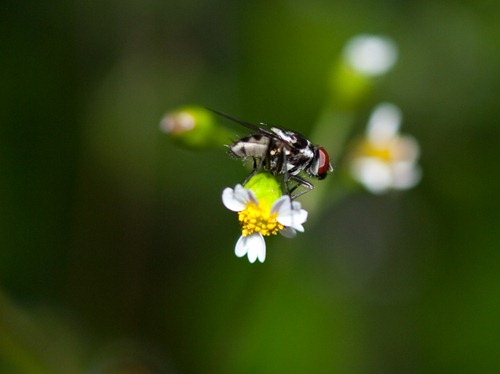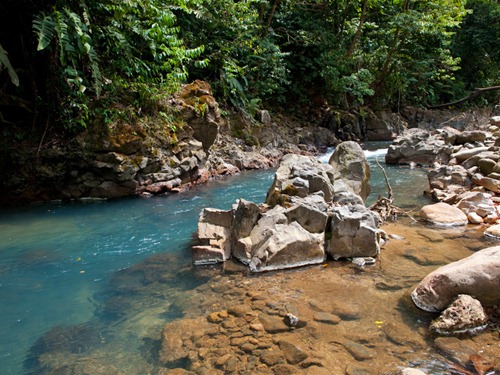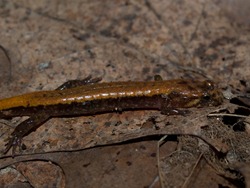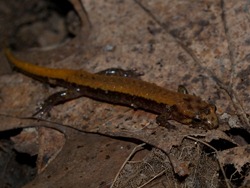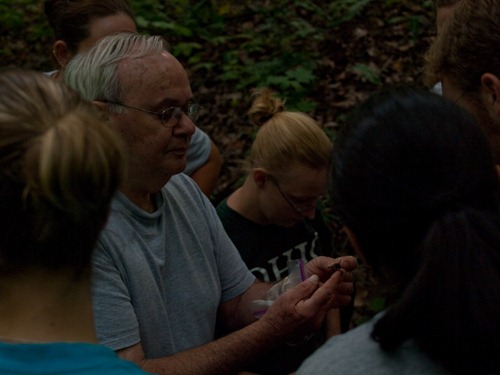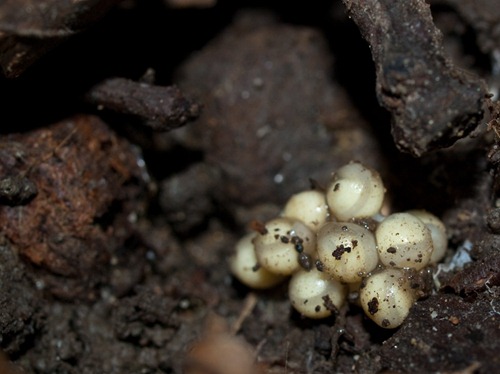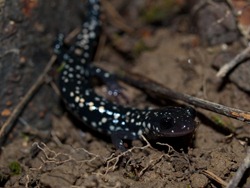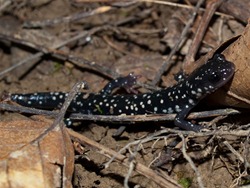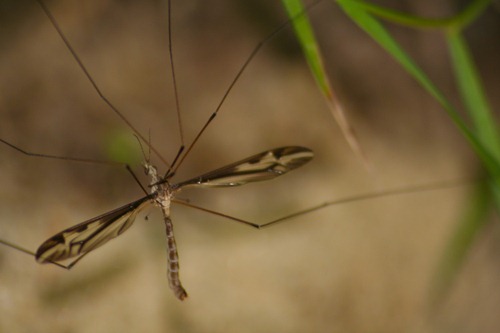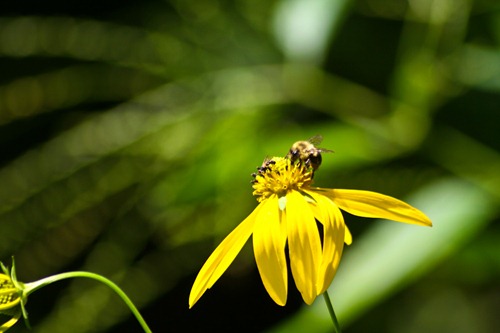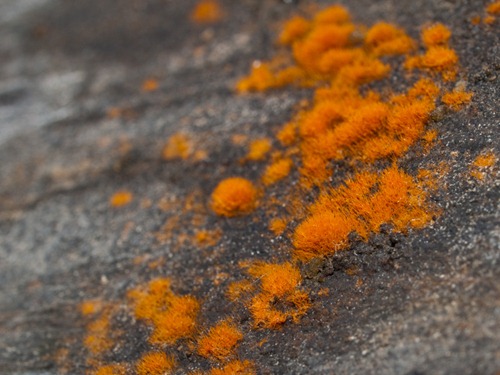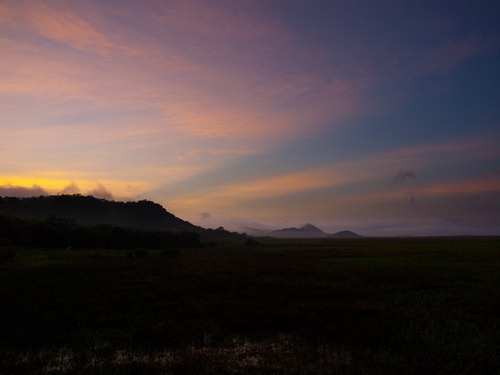Another unknown fly found in the wet, pre-montane forests of the Alberto Brenes Biological Reserve.
Monthly Archives: August 2009
Rio Jamaical
The majority of the Alberto Manual Brenes Biological Reserve is drained by the Rio Jamaical drainage basin, which is not easily accessed. The river has a much more tropical, Carribean look too it, and a portion of it drains some relatively new volcanic rock, making it less safe to drink than water from Rio San Lorencito. We drank from the small, headwater tributaries near-by. It is a larger river than the Lorencito, and has a much wider bed, so it’s open to much more light. Although I didn’t notice any fish, the river wasn’t devoid of life; there were tadpoles (although it may be interesting to see if the species and abundance of tadpoles compared between the San Lorencito and Jamaical) and plenty of anoles and frogs at the river’s edge potentially picking off emerging aquatic invertebrates.
After a long hike to get the this river, a refreshing swim was incredibly welcome.
Desmognathus fuscus
Dr. Orr
Desmognathus eggs
Plethodon glutinosus
Another fly!
This was the desktop background of my lab computer for well over year, so folks have probably seen it. It looked much better on my 19” LCD screen than it did on that computer, so I’d figure I’d post it.
It turns out though, that’s it’s another fly, which I always assumed was a Tipulidae. I’m not sure if they have painted wings though, and it’s much more fun to post it here than look it up on Wikipedia.
Bombus
An orange lichen?
I wonder if any lichen specialists frequent my blog. If so, how are lichens categorized? Certainly the individual fungal and green algal/cyanobacterial species are ‘clearly’ described, but are lichens themselves able to be characterized and described in the own right? For example, if the mutualisms are usually formed between single fungal and algal species, can a particular pair be classified? If pairs are not usually species-specific in this way, but more general lineages of either the fungal component, the algal component, or both do form more generalized groups of lichen, do these ‘groups’ behave similarly? Would a particular group likely inhabit a vertical slate cliff in Western New York, while another likely inhabits the forest floor? What types of adaptations in lichen groups fit these habitats?
What if this photograph isn’t even a lichen and I’m totally incompetent?
Also, what if I had just gone to the damn Wikipedia site before I wrote all that.

